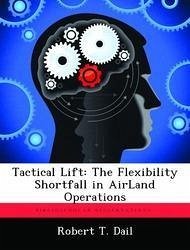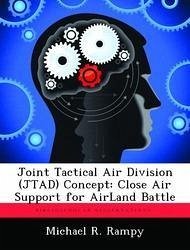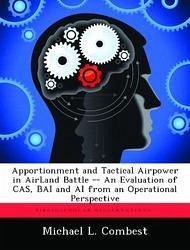
Tactical Lift: The Flexibility Shortfall in AirLand Operations
Versandkostenfrei!
Versandfertig in über 4 Wochen
52,99 €
inkl. MwSt.

PAYBACK Punkte
26 °P sammeln!
This monograph explores the capability of army tactical headquarters to fight and sustain combat brigades and task forces simultaneously. Its focus is on the tactical transportation shortfall which exists in the army today, the impact of this shortfall on AirLand Battle doctrine, and some recommended solutions. Historical examples from twentieth century war are used to demonstrate the importance of transportation in providing flexibility at the tactical level. Specifically, military motor transportation has repeatedly provided a degree of certainty and flexibility to combat operations since th...
This monograph explores the capability of army tactical headquarters to fight and sustain combat brigades and task forces simultaneously. Its focus is on the tactical transportation shortfall which exists in the army today, the impact of this shortfall on AirLand Battle doctrine, and some recommended solutions. Historical examples from twentieth century war are used to demonstrate the importance of transportation in providing flexibility at the tactical level. Specifically, military motor transportation has repeatedly provided a degree of certainty and flexibility to combat operations since the advent of the automobile on the battlefields of France in World War I. The paper questions whether current tactical headquarters possess the same degree of flexibility by defining a present day tactical transportation shortfall. This shortfall was determined from a review of current army organizational documents, planning factors, consumption rates, recently compiled lessons learned by the Combined Arms Training Activity at Fort Leavenworth, and interviews of former key tactical-level leaders. The paper argues that interdiction, competition, and friction will magnify current tactical lift shortfalls in future wars to a level where host nation support and scavenging will be unable to resolve them. The author concludes that while host nation support and scavenging may be appropriate means for supporting U.S. forces at the operational and strategic levels of war, they do not provide the certainty or flexibility required by tactical level headquarters to fight and win on the next battlefield. The authorization of additional military trucks and drivers is recommended at the task force or brigade level to correct the current shortfall.














